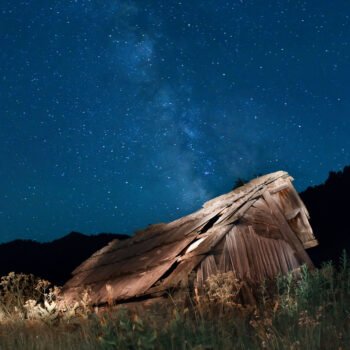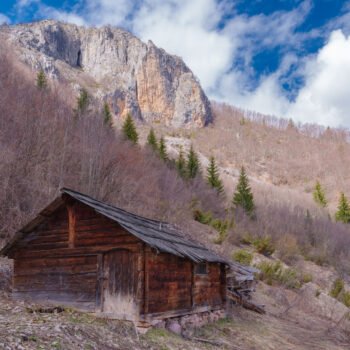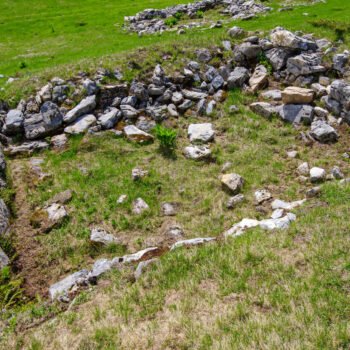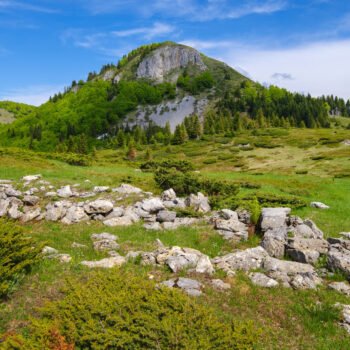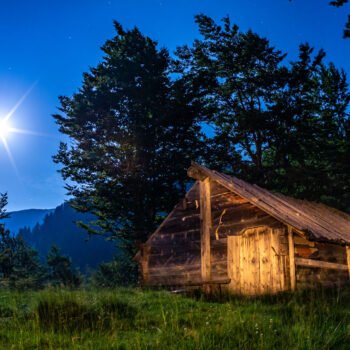- /
- Katun Road Untold Bjelasica
- /
- Cultural Heritage
Cultural Heritage
Cultural and historical heritage of Bjelasica is made of archeological sites, sacral monuments, folk architecture. Numerous indigenous objects of folk architecture in the villages and katuns, such as houses, log cabins, towers, watermills, are scattered along the brim of the Biogradska Gora National Park and the mountain Bjelasica. Katuns such as Pešića Rupe, Vranjak, Šiška, Vragodo seem very picturesque and attractive.
There are several necropolis sites within the park and its immediate surroundings. Since they haven’t been archeologically researched, the period they belong to cannot be specified with certainty. Those sites are Bardov do, Sjerogošte, Kraljevo kolo, Ganovača, Mican, Gradac, Svatovsko groblje (Wedding Cemetary).
The remains of the medieval town Brskovo are situated on the slopes of Bjelasica, in the protected zone of the park, and they are a proof that this settlement used to be a large mining and commercial center. Excavations done on the surface, as well as the remnants of residential buildings located in Šiška, indicate the presence of Saxon miners in Brskovo.
Archetypal architecture is characterized by fashioning of numerous katuns, seasonal pastoral settlements of the nearby villages. These settlements, common for mountain regions, were usually built within sunny valleys and ravines of Bjelasica, with bountiful pastures. Their structure consists of log cabins with accompanying livestock facilities. The living cabins were built using natural materials, wood, stone and straw, covered with a complex wood shingle or clapboard. Savardak is the oldest and most typical example of this traditional seasonal building style of the region. It used to be a place where people lived throughout the year in the past.
Folk handicraft of the local population, seen in crochet and knitting of woolen clothes, captivate with their beauty and way of manufacture. Homemade artisanship was dominant on Bjelasica and its surroundings – various objects, needed by the household, were made from natural materials. Women were mostly engaged in knitting and weaving. One can still find (rarely, though) a woman who is into weaving, more out of love and pleasure, making souvenirs. Men were skilled in woodworking, as well as in making traditional musical instrument – a fiddle.
As to the traditional performing culture (songs and dance), rarely does one hear the flute playing, loud singing, or see a folk dance on the mountain. However, folklore ensembles in towns around Bjelasica hold on to the tradition and keep the old customs from oblivion. A substantial narrative tradition is made of legends, stories and anecdotes, which have been passed from generation to generation and are still present.
Tutića katun
Tutića katun is an interesting but barely researched location of Bjelasica. It is situated in the very heart of the mountain, in the center of the massif, an abandoned and dilapidated old katun nobody lives in. It is an interesting one due to the fact that, unlike other katuns where cabins were made from wood, they were made of stone in Tutića katun. When you look down on it from one of the surrounding hills, it is clear that this used to be a large settlement, with many families living in it, and each and every building is clearly seen. No similar settlement can be seen anywhere nearby, not even in the wider region of Bjelasica. There are several theories about the origin of this katun, it is unclear which one is true. Some say it belonged to the tribes who had lived there before the Slavs came, others that these are remains from the time of the Turkish rule. In any case, original inhabitants of this katun are no longer with us, but the ragged walls of their huts are here to testify to their life in this area.
Abandoned katuns
Katuns and their huts are indispensable part of the cultural scenery of Bjelasica, whether they are lived in or abandoned. Unfortunately, numerous abandoned katuns can be found on Bjelasica, overgrown with grass and weed, but with wooden huts which still resist the tooth of time and testify of times gone by. Such are Mušika, Ocka, Riva katuns, families would travel with their cattle for two days to reach them during their move to the mountain. Or Jaganjčarske rupe katun, a place from a fairytale, isolated and surrounded with rocks and stones, similar to a scene from sci-fi films, and yet tucked away and romantic in its solitude.


